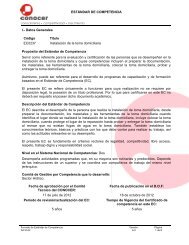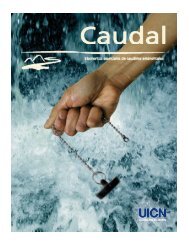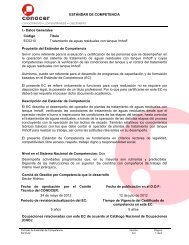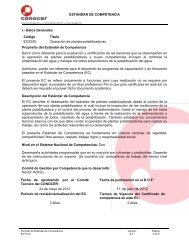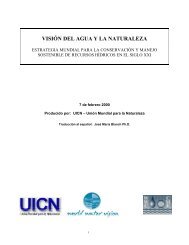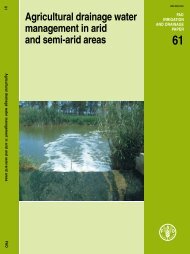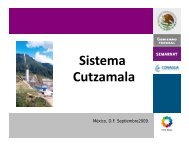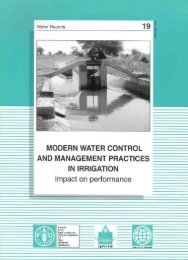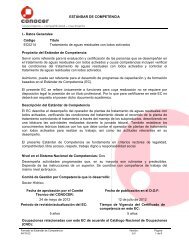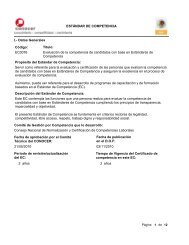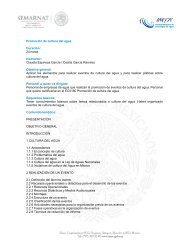The Conservation and Sustainable Use of Freshwater ... - IUCN
The Conservation and Sustainable Use of Freshwater ... - IUCN
The Conservation and Sustainable Use of Freshwater ... - IUCN
Create successful ePaper yourself
Turn your PDF publications into a flip-book with our unique Google optimized e-Paper software.
introduced species, such as Muskrat <strong>and</strong><br />
Nutria, occupied free ecological niches <strong>and</strong><br />
currently play an important role in local<br />
economies. <strong>The</strong> Muskrat species was introduced<br />
intentionally for its valuable fur;<br />
the Nutria species, however, acclimatized<br />
accidentally, escaping from the captivity<br />
<strong>of</strong> fur farms. Many intentionally- <strong>and</strong><br />
accidentally- introduced fish species play<br />
an important role in fishery, successfully<br />
occupying the secondary water reservoirs<br />
(Grass Carp, Carp Bream, White Amur<br />
Bream, Prussian Carp, Silver Carp, Bighead<br />
Carp, Peled, Rainbow trout, Sevan<br />
Trout, Amur Snakehead, <strong>and</strong> Flounder).<br />
Some <strong>of</strong> the introduced species are used in<br />
the biological control <strong>of</strong> malaria-transmitting<br />
mosquitoes (Eastern mosquit<strong>of</strong>ish).<br />
On the other h<strong>and</strong>, some accidentally-introduced<br />
fish species cause decline in the<br />
population size <strong>of</strong> several endemic fish<br />
species in the region, such as Chatkal Bullhead,<br />
Turkestan Sculpin, Turkestan Сatfish,<br />
Aral Ninespine Stickleback, Turkestan Ide,<br />
Tashkent Riffle Bleak, Pike Asp, Turkestan<br />
Barbel, <strong>and</strong> Sharpray.<br />
As the practice has shown, it is necessary<br />
to assess more carefully the impact<br />
<strong>of</strong> introduced <strong>and</strong> acclimatized species on<br />
the native wildlife, evaluating negative <strong>and</strong><br />
positive influences <strong>and</strong> taking into account<br />
the regulating measures for the support<br />
<strong>of</strong> the original flora <strong>and</strong> fauna to achieve a<br />
state <strong>of</strong> balance.<br />
<strong>The</strong> preliminary analysis <strong>of</strong> this situation<br />
has shown clearly the necessity, in<br />
the management <strong>of</strong> water ecosystem resources,<br />
to evaluate their productivity, carrying<br />
capacity, <strong>and</strong> acceptable bounds <strong>of</strong><br />
their use. <strong>The</strong> implementation <strong>of</strong> special<br />
legislative regulations is enough to support<br />
the survival <strong>of</strong> some species (many hunting<br />
game species: ducks, gray geese, pheasant,<br />
muskrat, fishes, etc.). For other species,<br />
particularly the currently threatened ones,<br />
it is necessary to provide special conservation<br />
measures, monitoring, <strong>and</strong> proper<br />
management.<br />
Fig. 11. Changes <strong>of</strong> zoo-benthos (firm line) <strong>and</strong> zoo-plankton (dotted line) in<br />
Aral Sea during 1954 -1991.<br />
Fig.12. Changes in biomasses <strong>of</strong> some freshwater <strong>and</strong> brekish species <strong>of</strong><br />
zoobetos in Aral Sea during1954 -1991: 1 - Chironomidae; 2 - Dreissena spp.; 3<br />
- Hypanis spp.; 4 - <strong>The</strong>odoxus pallasi.<br />
Fig.13. Changes <strong>of</strong> biomass <strong>of</strong> aboriginal <strong>and</strong> acclimatized euryhaline species<br />
<strong>of</strong> the Aral Sea zoobenthos during 1954 -1991: 1-Syndosmya segmentum; 2-<br />
Cerastoderma isthmicum; 3 -Caspiohydrobia spp., 4- Nereis diversicolor<br />
Change in the productivity <strong>of</strong> the desert pastures<br />
under human <strong>and</strong> climatic factors<br />
Change in climate as a result <strong>of</strong> the decrease in the Aral<br />
Sea surface area <strong>and</strong> the loss <strong>of</strong> the sea’s thermal capacity<br />
is highly evident, although not so considerable. Influence<br />
<strong>of</strong> the sea-level drop on the thermal regime <strong>of</strong> the<br />
near-l<strong>and</strong> (near-earth) layer <strong>of</strong> atmosphere is limited by<br />
coastal zone to 120-150 km. This is approximately the<br />
territory which is cleared from water or where the climate<br />
regime is affected by changes in deltas or level <strong>of</strong> subsoil<br />
(underground) water bedding. With the retreat <strong>of</strong> the Aral<br />
43



